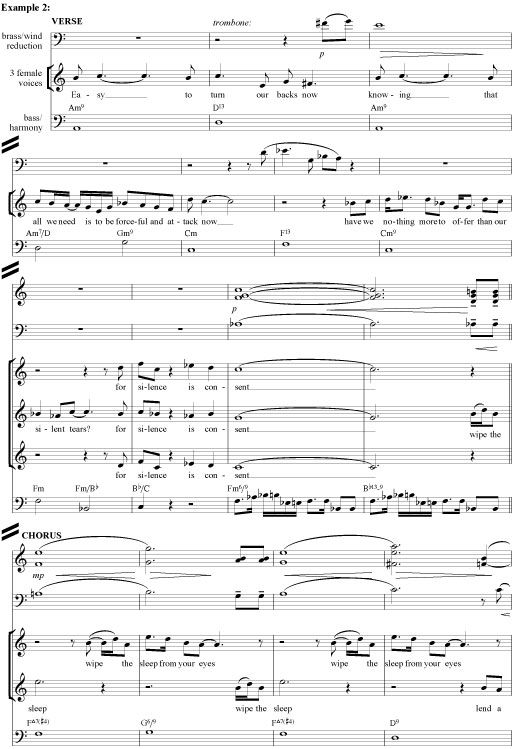A COMPOSER'S BLOG
Tony Haynes, composer/creative director of the Grand Union Orchestra, tells the inside story of his music for the orchestra, its musicians and colourful history.
28: On the Edge
Towards the end of November, Grand Union makes a welcome return to the historic and gloriously atmospheric Wilton’s Music Hall with a typically ambitious programme that displays the whole range of the Orchestra’s current work. Billed as a ‘four-day world jazz festival’, On the Edge provides on successive nights an opportunity to jam with GUO musicians, dance to their music from around the world, hear singers from six different countries and catch some great jazz soloists in a global big band setting.
Wilton’s is not just East London’s most attractive gig venue, however. Situated at the Tower Bridge end of Cable Street, it is redolent of the history of the East End, particularly the notorious Battle of Cable Street itself, when in 1936 Oswald Mosley and his Blackshirts, threatening the local, long-established Jewish population, were forced to abandon their march through Whitechapel and Stepney in the face of powerful popular protest. Grand Union and its Youth Orchestra took part in commemorating the 75th anniversary of this event at Wilton’s – one of the most intensely moving performances I have ever been involved in.
But history doesn’t stand still. Fascism and racist demonstrations continue to foment in East London, stirred up by the National Front, the BNP and most recently the English Defence League; their favourite target these days is ‘Islamists’, the very substantial Muslim population in the area (the London Mosque is also nearby). So far, they too have always been repelled by popular revulsion and effective public protest and counter-demonstrations, but in the present social and economic climate we should not be complacent.
I have often spoken of the ‘authenticity’ of Grand Union’s music – performed by singers and musicians who have directly experienced the kind of events they portray or lived the stories they tell. Many venues have an ‘authenticity’ too, and suggest material and a style of performance that suits them. The Cable Street anniversary event was so moving for this reason: Wilton’s feels the right place to perform songs that express the history of East London, its mixed demographic and its record of protest and stand against injustice.
This is why this song came to mind, why I am writing this post around it, and why I shall include it in the programme for On the Edge.
Silence is Consent
Silence is Consent comes from Freedom Calls, and on the CD the first verse, sung unaccompanied, is used to link two earlier numbers:
The ‘composition tip’ here is not about musical detail, but an unusual approach to song-writing.
This is one of those songs where the expression of the music is quite deliberately at odds with the meaning of the lyrics. It’s a technique that I favour often – a version of Brecht’s ‘alienation effect’, and therefore not surprisingly characteristic of a lot of Kurt Weill’s songs. Rather than respond directly to the stridency and shoutiness of the words, I thought it would be more effective to make the song deceptively romantic, a kind of lullaby; that way, what the words are actually saying comes out more starkly against the soft textures, and throws their ‘message’ into greater relief.
To compound the effect, the introduction (the first minute or so) is very spacy and almost lush, led by panpipes (played, poignantly, by Chilean exile Vladimir Vega – see also Post 26 and Post 11) over bells, vibraphone and lyrical bass guitar (the great Keith Morris) based on an A minor (Dorian mode) scale and the simple Am-D chord changes which open the song. Then the voice comes in, with trombone obbligato; here is the complete second verse and chorus:
The harmony is unusual but simple, providing a basis for the contrapuntal textures The chorus is distinguished by the intertwining women’s voices, sustained chords in brass and wind, and especially the unusual addition of steel pans to the mix. A solo flute (which you can just hear playing a simple swaying figure against the voice in both verses) plays a short link into the third and final verse (sung by Vladimir), a little sparer and more direct with the addition of a tolling bell:
Note
Silence is Consent is sung here by Josefina Cupido, who was a member of my first independent band RedBrass which toured in the late 1970s. She is also a very fine drummer and percussionist, a founder member of the celebrated and pioneering women’s jazz group The Guest Stars. Jo performed in several early Grand Union Orchestra shows (A Book of Numbers, Freedom Calls), and in Can’t Chain Up Me Mind (toured 2007, commemorating the 200th anniversary of the abolition of the slave trade). It’s great to welcome her back again for On the Edge, and indeed to hear her sing Silence is Consent once more!




